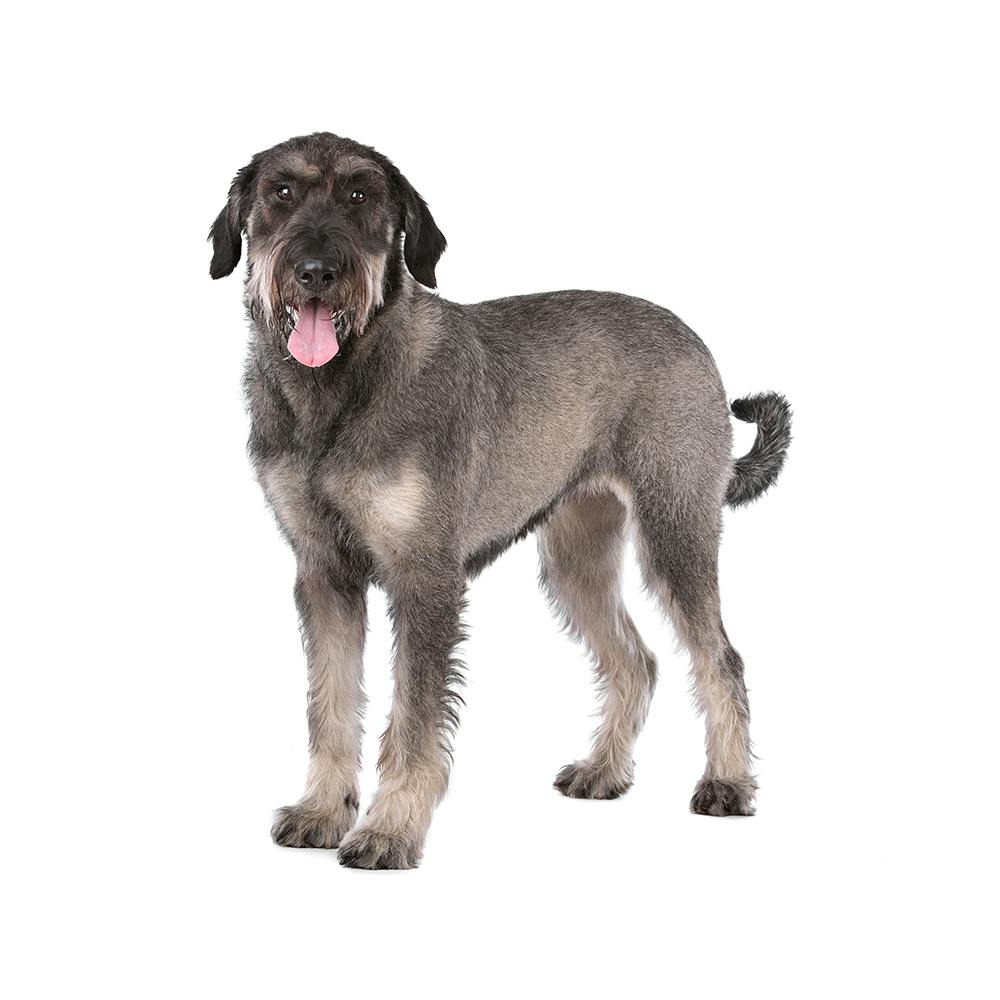
Giant Schnauzer
The Giant Schnauzer, also known as Riesenschnauzer, originated in the 17th century in Germany's Bavaria region. Initially, they were bred for driving cattle and guarding breweries, butcher shops, and farms due to their strength and alert nature1. Their ancestors include the Standard Schnauzer and perhaps the black Great Dane and the Bouvier des Flandres. They were later employed in the police and military roles due to their trainability and protective instincts.
- Origin
- Germany
- Alternate Names
- Riesenschnauzer, Munich Schnauzer, Munchener, Russian Bear Schnauzer
- Life Expectancy
- 12-15 years
- Average Male Height
- 25.5-27.5 inches
- Average Female Height
- 23.5-25.5 inches
- Average Male Weight
- 60-85 pounds
- Average Female Weight
- 55-75 pounds
- Coat Length
- Medium
- Coat Type
- Double, Wiry
- Coat Colors
- Black, Black & Tan, Fawn, Pepper & Salt
- Coat Pattern
- None
Genetic Predispositions and Health
Giant Schnauzers can suffer from osteochondritis dissecans, hypothyroidism, gastric torsion, canine hip dysplasia, dilated cardiomyopathy, hyperuricosuria, progressive retinal atrophy, progressive rod-cone degeneration, coagulation factor VII deficiency, degenerative myelopathy, intestinal cobalamin malabsorption, and neuroaxonal dystrophy.
Personality and Behavior
Giant Schnauzers are intelligent, versatile, and protective dogs. They are known for their intense loyalty and alertness, which makes them excellent guard dogs. They need lots of mental and physical stimulation due to their high energy levels and intelligence. They're generally good with children and can get along well with other animals if properly socialized.
Fun Facts
In World War I and II, Giant Schnauzers were employed as military dogs.
The name 'Schnauzer' originates from the German word 'Schnauze', which means 'muzzle' or 'snout'.
Despite their size, Giant Schnauzers are not considered a 'giant breed' like Great Danes or Mastiffs.
References
https://www.akc.org/dog-breeds/giant-schnauzer/ https://www.fci.be/Nomenclature/Standards/181g02-en.pdf https://www.ukcdogs.com/giant-schnauzer
https://www.petmd.com/dog/breeds/c_d_giant_schnauzer
https://www.pawprintgenetics.com/products/breeds/137/